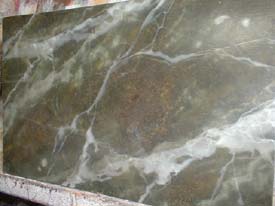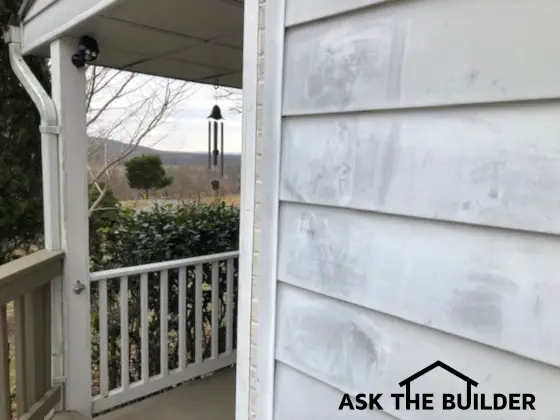Painting Floors - Tips and Techniques
The minute you apply the first brush stroke of paint to your floor you are going to cringe. There is something very unnatural about painting a floor. I still am not comfortable when I do it. I feel this compulsion to immediately clean the paint from the floor! After all, spilling or dripping paint on most floors is a bad thing.
What Can be Painted?
Just about any flooring material you can think of can be successfully painted. Ceramic tile, sheet vinyl, old linoleum, hardwood, vinyl tile, etc. are all perfect candidates. If you have ever tried to clean up old paint drips or splatter from a floor you know what I am saying is true. High quality paint that is applied to a clean floor and then allowed to cure is virtually impossible to remove from most flooring materials. Cover the paint with two or three coats of urethane and you will have a devil of a time getting it up!
The preparation process for all flooring materials is the same. You need to get the floors squeaky clean and remove all traces of wax. Dirt, wax and glossy surfaces prohibit good adhesion between the paint and the floor. Remember, paint is simply colored glue. It is nothing more than that. Glue doesn't stick well to dirt, dust, wax or other high gloss surfaces.
Glazed ceramic tiles can be painted with great results if you lightly sand the tile after it is clean and dry. The sanding dulls the glazing and actually creates micro-grooves that allow paint to grab better.
Primers
It is usually necessary to apply a primer to the floor before you paint. Primers do a great job if the surface to be painted has uneven texture or porosity. This is what bare wood or freshly finished drywall has. Primers even out all of the imperfections and allow the finish paint to soak into the surface at an even rate. A ceramic tile floor or sheet vinyl floor already has fairly even porosity. The only areas that might need primer in these examples would be the grout. Grout has a completely different texture than the tile itself. Even after applying a primer, there is a good chance you will see a gloss difference when you finish the job.
Get Crazy!
Would you like to raise some eyebrows? Create a geometric pattern and transfer it to the floor you intend to paint. Have you seen those cool stenciled walls in designer and decorator houses? Why not stencil your kitchen or family room floor? The possibilities are endless.
Basement playrooms are the best. If you want to see what I mean, you should go to Asheville, North Carolina to the famous Biltmore Estate. One Halloween the Vanderbilt children and their friends were allowed to paint a basement space to their hearts' delight. The wall paints and designs are still there today.
Floors make great places for maps, lakes, roadways, or any other thing you find in nature. Take my son for example. He plays make believe all the time in our current living room. The floor is the surface of the earth. If he is playing with boats, then the floor is ocean blue to him at that point in time. I am getting ready to paint a basement room floor area so that he actually has his ocean, his roadway, army battlefield, etc. You can do the same. Remember, once they outgrow it, simply paint it again with a new concept, color, border, stencil or whatever.
Applying Paint
You will paint the floor exactly as you have painted walls and woodwork for years. Use a combination of the best rollers and brushes you can buy. Cheap rollers and brushes yield inferior results. Spending five or seven more dollars for a good brush is worth it. Don't get cheap on me here.
To get the smoothest floor, you need to clean it and then inspect it at night. Defects, bumps, etc show up best if you use an automotive trouble light that is held down at floor level so the light beams strike the floor nearly parallel. The smallest bump will seem like a mountain under these light conditions. Scrape bumps off and vacuum them. Fill tiny holes and cracks with standard wood filler. Sand it once it is dry. Filled areas will have to be primed before you paint or you will see a texture/gloss difference.
Sheet Vinyl Embossing
Should you fill in the embossed patterns on a sheet vinyl floor? It is up to you and it is a lot of work. It also creates a problem if the filler doesn't bond well.
I suggest that you paint a small test patch - say 2 feet by 2 feet first. See if you like the look under daylight conditions and nighttime lighting. You might be amazed at how the embossed pattern actually enhances the look of the floor - much like a Berber carpet pattern. Good luck with your painted floor!
Related Column: Painting Floors Really Works Well
Column B243

